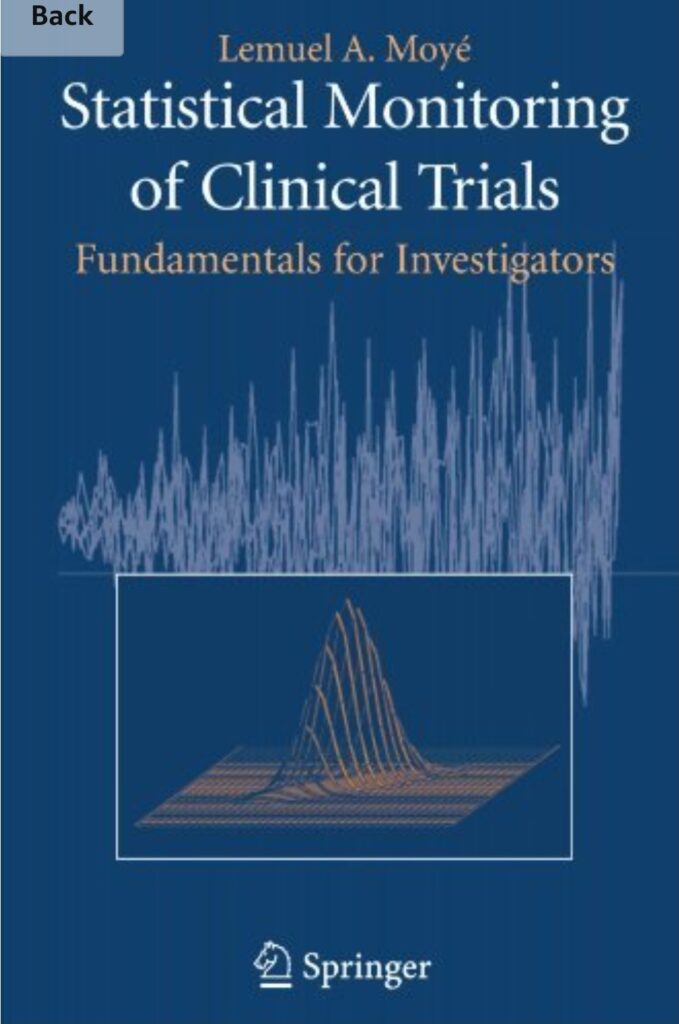Statistical monitoring procedures are the body of computations that aid clinical investigators in determining if a research program should be suspended prematurely. Specifically, these guidelines are used to end a clinical study if the investigation is very likely to produce either 1) an early positive benefit, 2) an early indication of harm, or 3) a neutral effect at the time the study is scheduled to end (known as futility).
Research scientists and members of clinical trial oversight committees rely upon these procedures, colloquially expressed as “stopping rules”. Statistical Monitoring of Clinical Research: Fundamentals for Investigators describes the background, purpose, and implementation of statistical monitoring procedures for clinical investigators who possess only a rudimentary statistical background.

Excerpt from Statistical Monitoring of Clinical Trials
Einstein developed the notion that a statistical treatment of complex systems could provide useful insight into the behavior of complex systems (like the trillions of molecular bombardments that a microscopic pollen granule sustains in suspension). However it was difficult to do anything of practical importance with this result, primarily because the mathematics of probability had not yet been sufficiently developed. However, this last giant step that moved this field toward the application of clinical science was undertaken by a mathematical prodigy, Norbert Wiener.

The story of Norbert Wiener is not just the demonstration of the power and idiosyncrasies of the mathematical personality. It is a story of remarkable, parental persistence and optimism.
Norbert Wiener’s father, Leo Wiener was a physician and an engineer in Europe. When he emigrated to the United States, like many immigrants, he was not permitted to practice his trade. He became a farmer, a factory worker, and a teacher. However, he was always interested in mathematics [[i]].
His son, Norbert above all wanted to read, becoming a voracious reader at an early age. However, he was not good in arithmetic and had tremendous difficulty in school. In his own words later in life, Norbert Wiener said “My chief deficiency was mathematics”[[ii]]. His father, responded by removing him from school, taking on the major role of tutoring his son. However, Norbert was a difficult and trying student who had no affection for arithmetic. Compounding this difficulty was the boy’s physical awkwardness and clumsiness. Norbert’s poor coordination, in concert with profound and poorly corrected nearsightedness, made it impossible for him to carry out even the simplest physical demonstration for himself. His father persisted, working with his son over the next few months. The months turned into years.
The result was miraculous. Six years after he professed a crippling and limiting weakness in mathematics, Norbert Weiner was admitted to Tufts College at the age of eleven. He completed his undergraduate studies when he was fourteen, upon which time he was admitted to Harvard graduate school. Pursuing training first in zoology, and then mathematics he completed his Ph.D. at 18. Shortly thereafter, he became a mathematics instructor at MIT, where he remained for his entire career. He was 24 years old.
